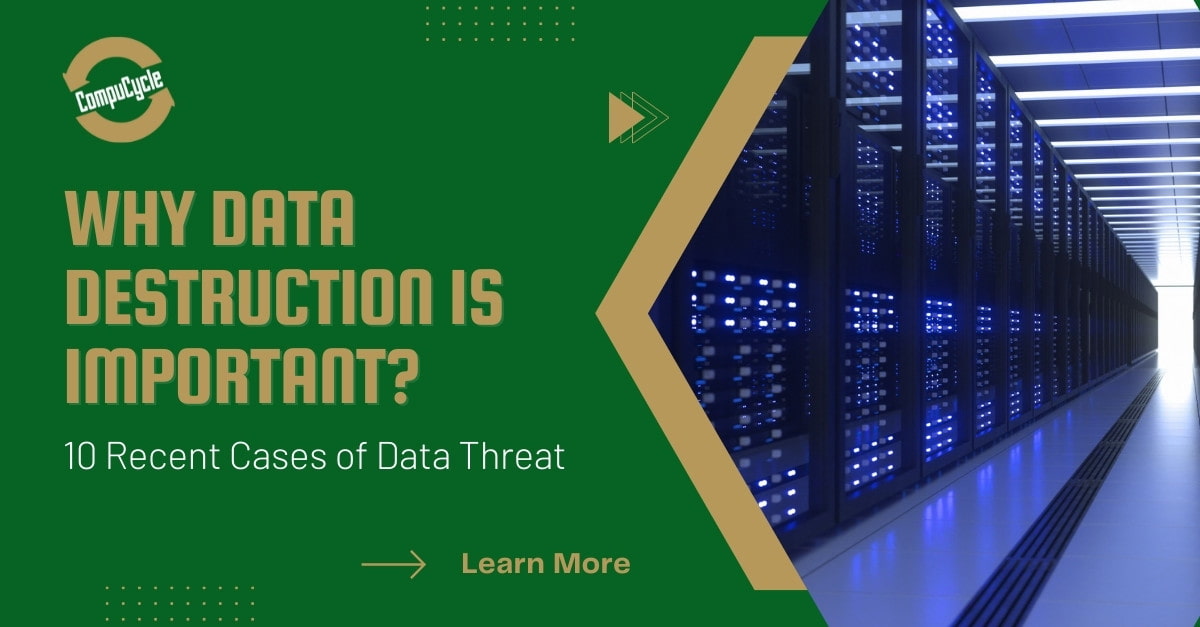The Influence of Effective Data Destruction on Cyber Security Threat Monitoring
The Importance of Effective Information Destruction Practices in Shielding Sensitive Details and Ensuring Computer System Safety
In a period where information breaches are increasingly usual, the value of efficient data destruction techniques can not be overemphasized. Applying durable data destruction approaches not only mitigates these dangers however also straightens with lawful conformity needs, making certain that organizations support their track record and foster client trust.
Comprehending Information Destruction
Recognizing information destruction is crucial in today's digital landscape, where sensitive information can conveniently be endangered. Reliable information devastation includes not merely deleting documents however making sure that information is irretrievable via thorough approaches. This process is crucial for organizations that manage personal customer details, copyright, or interior records, as any breach can lead to serious economic and reputational repercussions.
Information devastation incorporates numerous methods, consisting of shredding physical media, degaussing magnetic storage space devices, and using software-based solutions that overwrite data several times. Each technique offers a certain objective and needs to straighten with the sensitivity of the info being taken care of. Physical damage is often favored for hard drives consisting of very personal information, while software program methods may be adequate for much less delicate info.
Furthermore, sticking to sector standards and regulations, such as the General Information Defense Law (GDPR) or the Health Insurance Coverage Transportability and Liability Act (HIPAA), is crucial for conformity and to mitigate lawful risks. Organizations must create a durable information devastation plan, train workers on best methods, and consistently investigate their treatments to make certain that all sensitive details is dealt with safely and successfully.
Dangers of Inadequate Practices
Insufficient information damage techniques reveal organizations to considerable risks that can have far-ranging repercussions. When delicate info is not properly disposed of, it continues to be susceptible to unapproved gain access to, which can lead to information violations and identity burglary. Such cases not just jeopardize the safety and security of individuals yet also stain the company's track record, resulting in a loss of consumer count on and possible financial consequences.
Moreover, regulative conformity is progressively rigorous in numerous sectors. Failure to abide by information damage laws can lead to hefty fines and lawsuits versus organizations. These fines can stress funds and draw away focus from core business operations.
In enhancement, the misuse of recurring information can result in intellectual property burglary or corporate reconnaissance, endangering affordable benefits (data destruction). The influence of insufficient information damage expands past instant economic losses; it can also result in lasting damage to brand name integrity and market placement

Organizations need to identify that data protection is not entirely about avoiding breaches; it likewise includes the accountable management of data throughout its lifecycle. Ignoring reliable data destruction methods can have disastrous ramifications, emphasizing the requirement for durable procedures to alleviate these dangers.
Finest Practices for Data Damage
Executing effective data devastation methods is necessary for guarding sensitive details and maintaining compliance with regulatory requirements. Organizations needs to adopt a multi-faceted technique to make certain that data is irretrievable, thus preventing unauthorized access and potential breaches.
First, data should be classified based on sensitivity, permitting organizations to apply ideal damage methods customized to the level of risk. For digital data, making use of software-based data-wiping tools that adhere to sector requirements can efficiently overwrite existing information. Physical damage methods, such as shredding or degaussing, are essential for devices that store sensitive details, ensuring total elimination.
Developing a clear information retention policy is vital, outlining how much time different types of details must be retained before devastation. Routine audits of information storage systems are likewise necessary to determine unneeded or obsolete data requiring removal.
In addition, training workers on the importance of data destruction and the certain methods to comply with fosters a society of security within the company. Keeping documentation of information damage refines provides liability and supports compliance with external regulations and internal policies. By adhering to these finest techniques, organizations can substantially minimize the risks connected with data direct exposure.
Legal and Conformity Considerations

Failing to conform with these policies can cause serious penalties, consisting of substantial fines and reputational damages. Organizations has to carry out a robust information devastation policy that lines up with these lawful structures and provides clear guidelines on the correct methods of data disposal, whether physical shredding or digital cleaning.
Moreover, preserving paperwork of data damage tasks is important for demonstrating compliance throughout audits or examinations. By prioritizing legal and compliance considerations, organizations can boost their information safety and security posture and foster depend on with stakeholders and clients, eventually adding to a more protected data administration atmosphere.
Advantages of Effective Information Damage
Efficient information damage methods prolong beyond simple conformity; they use significant benefits to companies that prioritize them. By ensuring that sensitive information is irretrievably ruined, companies mitigate the danger of information violations and the potential financial consequences connected with them. This positive technique not only safeguards versus unauthorized access but additionally boosts the total reliability of the company in the eyes of stakeholders and clients.
Executing robust information destruction approaches, such as physical destruction of storage space tools or advanced data wiping methods, adds to the strengthening of an organization's cybersecurity posture. data destruction. It decreases the likelihood of intellectual building theft and protects exclusive info, therefore maintaining an one-upmanship on the market

Conclusion
In verdict, effective information devastation practices are necessary for protecting delicate information and enhancing total computer system safety and security. By carrying out extensive approaches such as shredding, software, and degaussing overwriting, companies can reduce the dangers connected with unapproved access and data violations. Adherence to regulative requirements, consisting of GDPR and HIPAA, additional strengthens conformity and shields versus lawful consequences. Eventually, a dedication to durable data destruction methods promotes a society of responsibility, thus enhancing a company's cybersecurity stance and preserving customer trust fund.
